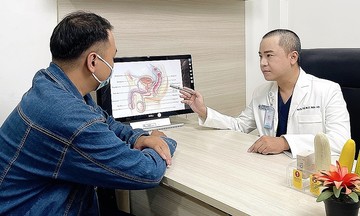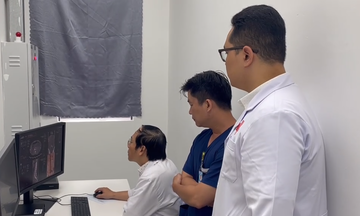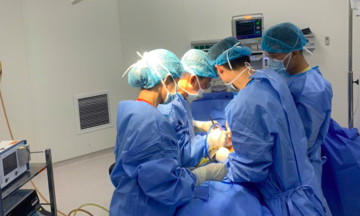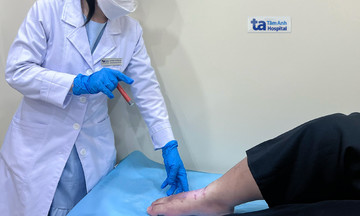On 8/9, Dr. Chu Tan Si, Head of the Neurosurgery - Spine Department at Tam Anh General Hospital in TP HCM, reported on a 31-year-old patient, Nguyen, who was admitted with severe pain radiating from his lower back down his leg, bladder dysfunction, and leg muscle strength reduced to only 20%. An MRI of his lumbar spine revealed a 1.5 cm nodular abnormality located within the spinal canal at the L2-L3 level, between the dura mater and the spinal cord.
According to Dr. Si, although the tumor was small, its location in the narrow spinal canal posed a significant threat. It was suspected to be either a meningioma or a schwannoma, originating directly from a nerve root. This caused narrowing of the spinal canal, compressing the cauda equina and the nerves controlling the sphincter and bladder, leading to weakness and dysfunction such as constipation and urinary incontinence. Nguyen also had minor herniated discs at L4-L5 (right side) compressing the right L5 nerve root, and at L5-S1 (central left side) compressing the left S1 nerve root, accompanied by multi-level disc degeneration.
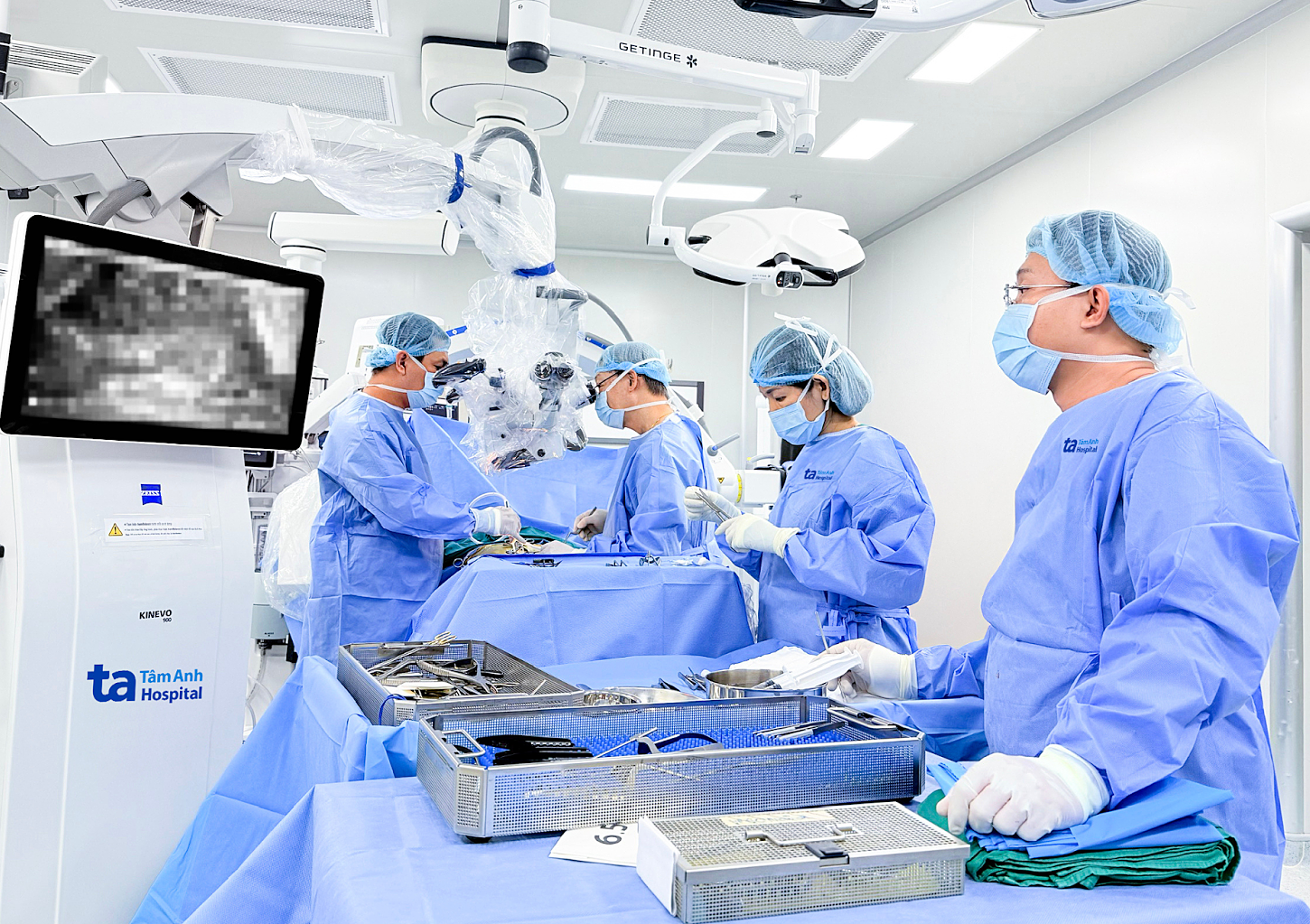 |
Doctors perform surgery to remove the spinal tumor with AI-assisted microsurgery. *Photo: Tam Anh General Hospital* |
After consultation, doctors decided on emergency surgery to remove the tumor through a posterior approach. They opened the posterior arch of the L2-L3 vertebrae to access the space between the dura mater and the spinal cord. The tumor had clear boundaries and originated close to a nerve root.
Using a surgical microscope, the surgeon meticulously dissected the tumor, millimeter by millimeter, freeing the nerve root and cauda equina. Throughout the procedure, intraoperative neurophysiological monitoring (IONM) was continuously employed. This system provides immediate alerts if surgical instruments come into contact with critical structures, allowing the surgeon to make necessary adjustments.
 |
A technician guides Nguyen through postoperative rehabilitation exercises. *Photo: Tam Anh General Hospital* |
After approximately 3 hours, the surgery was successfully completed, and the entire tumor was removed. Following the operation, Nguyen's leg muscle strength improved to 80%. He was discharged and continues regular check-ups and physical therapy for full muscle recovery. His herniated discs, considered minor, are being managed conservatively.
Dr. Si explained that spinal tumors, such as meningiomas and schwannomas, often develop silently, with symptoms easily mistaken for herniated discs or mechanical back pain. He emphasized the importance of seeking specialized medical attention if back pain is accompanied by limb weakness, numbness, sensory disturbances, or bowel/bladder dysfunction. Early detection and prompt surgical intervention offer the best chance of functional recovery. Conversely, if left untreated, prolonged nerve compression by the tumor can cause irreversible damage, leading to a high risk of permanent paralysis.
Phuong Thy
*The patient's name has been changed.




